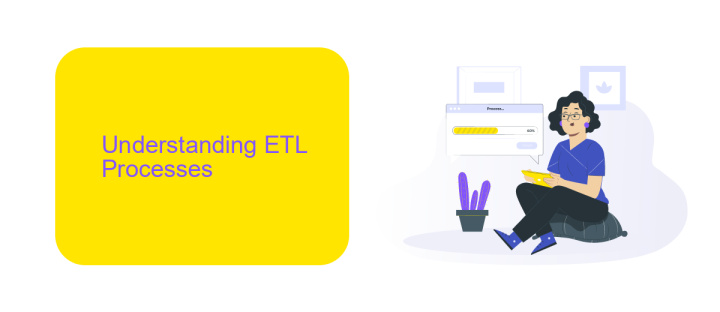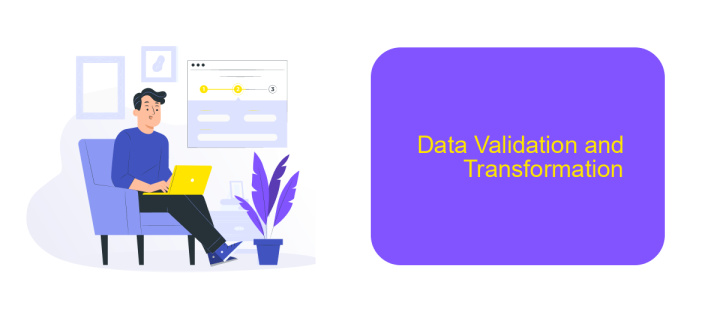ETL for Data Conversion Project
ETL (Extract, Transform, Load) processes are crucial for data conversion projects, ensuring seamless data migration and integration. By systematically extracting data from various sources, transforming it into the required format, and loading it into target systems, ETL enables organizations to harness the full potential of their data. This article explores the key components and benefits of ETL in data conversion projects.
Introduction
ETL (Extract, Transform, Load) processes are crucial for any data conversion project, ensuring that data is efficiently transferred from one system to another. These processes help in the seamless integration of data, maintaining its integrity and consistency throughout the transfer. Whether migrating data to a new platform or consolidating information from multiple sources, ETL plays a pivotal role in achieving accurate and reliable data outcomes.
- Extract: Retrieving data from various sources, such as databases, APIs, and flat files.
- Transform: Converting the data into a suitable format, including cleaning, enriching, and validating it.
- Load: Inserting the transformed data into the target system, ensuring it is accessible and usable.
Services like ApiX-Drive facilitate the integration process by automating data workflows between different applications and systems. This not only saves time but also reduces the risk of errors, making data conversion projects more efficient and reliable. By leveraging such tools, organizations can streamline their ETL processes, ensuring that data is accurately and efficiently converted to meet their specific needs.
Understanding ETL Processes

ETL, which stands for Extract, Transform, Load, is a critical process in data conversion projects. It involves extracting data from various sources, transforming it into a suitable format, and then loading it into a target system. The extraction phase focuses on retrieving data from disparate sources, which can include databases, APIs, and flat files. This data is then transformed to meet the specific requirements of the target system, involving operations such as cleansing, aggregating, and enriching the data.
The final step, loading, involves importing the transformed data into the target system, ensuring it is correctly integrated and accessible for analysis or further processing. Tools like ApiX-Drive can simplify the integration process by providing pre-built connectors and automation capabilities, reducing the manual effort required. Understanding each phase of the ETL process is essential for ensuring data integrity, accuracy, and consistency throughout the data conversion project.
Building the ETL Pipeline

Building an ETL pipeline for a data conversion project involves several critical steps to ensure data is accurately and efficiently transferred and transformed. The process begins with extracting data from various sources, which can include databases, APIs, and flat files.
- Data Extraction: Identify and connect to the data sources. This can be achieved using tools like ApiX-Drive, which simplifies the integration process by providing pre-built connectors and a user-friendly interface.
- Data Transformation: Cleanse, standardize, and transform the data to fit the target schema. This step may involve data validation, deduplication, and enrichment to ensure data quality.
- Data Loading: Load the transformed data into the target system, such as a data warehouse or a data lake. Ensure the loading process is efficient and handles large volumes of data seamlessly.
Throughout the ETL process, it is crucial to monitor and log each step to identify and resolve any issues promptly. Utilizing tools like ApiX-Drive can enhance the efficiency and reliability of your ETL pipeline, ensuring a smooth data conversion project.
Data Validation and Transformation

Data validation and transformation are critical steps in any ETL process, ensuring that the data extracted from various sources is accurate, consistent, and ready for analysis. During the validation phase, data is checked for completeness, accuracy, and compliance with predefined rules. This step helps identify any anomalies or errors that need to be addressed before the data can be transformed and loaded into the target system.
Transformation involves converting data into a suitable format for the target system. This includes cleaning, filtering, and aggregating data to meet the specific requirements of the project. Transformations may also involve data enrichment, where additional information is added to the dataset to enhance its value.
- Data Cleaning: Removing duplicates, correcting errors, and filling in missing values.
- Data Filtering: Selecting relevant data based on specific criteria.
- Data Aggregation: Summarizing data to provide a higher-level view.
- Data Enrichment: Adding external data to enhance the dataset.
Using tools like ApiX-Drive can simplify the integration process by automating data transfers between various platforms. This ensures that data is consistently validated and transformed according to the project's specifications, reducing the risk of errors and improving overall efficiency.


Conclusion
In summary, ETL (Extract, Transform, Load) processes are fundamental for successful data conversion projects. They ensure that data is accurately extracted from various sources, transformed into a suitable format, and loaded into the target system. This structured approach minimizes errors, enhances data quality, and ensures seamless integration across different platforms.
Moreover, leveraging tools like ApiX-Drive can significantly streamline the integration process. ApiX-Drive offers a user-friendly interface and robust features for automating data workflows, making it easier to connect disparate systems without extensive coding. By utilizing such services, organizations can achieve more efficient and reliable data conversions, ultimately driving better decision-making and operational efficiency.
FAQ
What is ETL in the context of a data conversion project?
Why is ETL important for data conversion projects?
What tools can be used for automating ETL processes?
How can I ensure data quality during the ETL process?
What are common challenges in ETL for data conversion projects?
Apix-Drive will help optimize business processes, save you from a lot of routine tasks and unnecessary costs for automation, attracting additional specialists. Try setting up a free test connection with ApiX-Drive and see for yourself. Now you have to think about where to invest the freed time and money!

